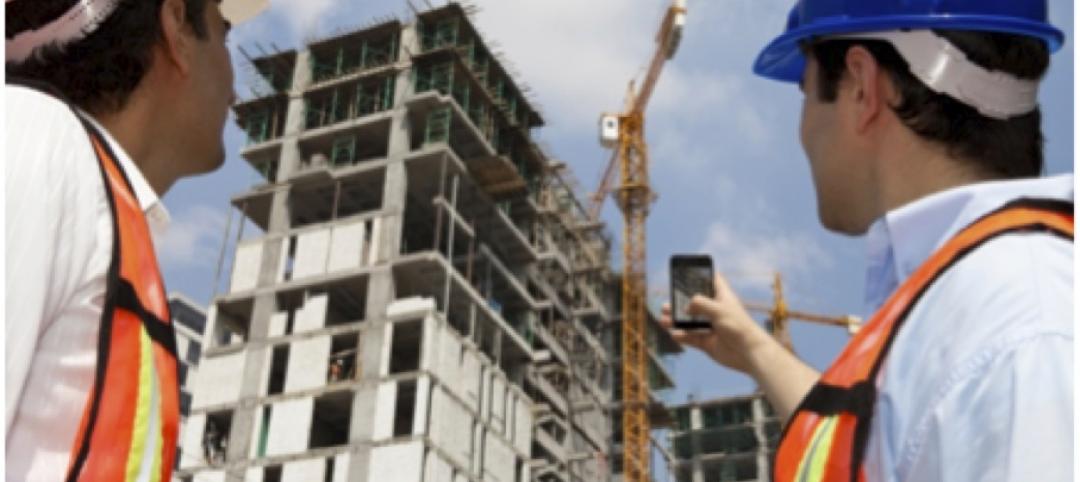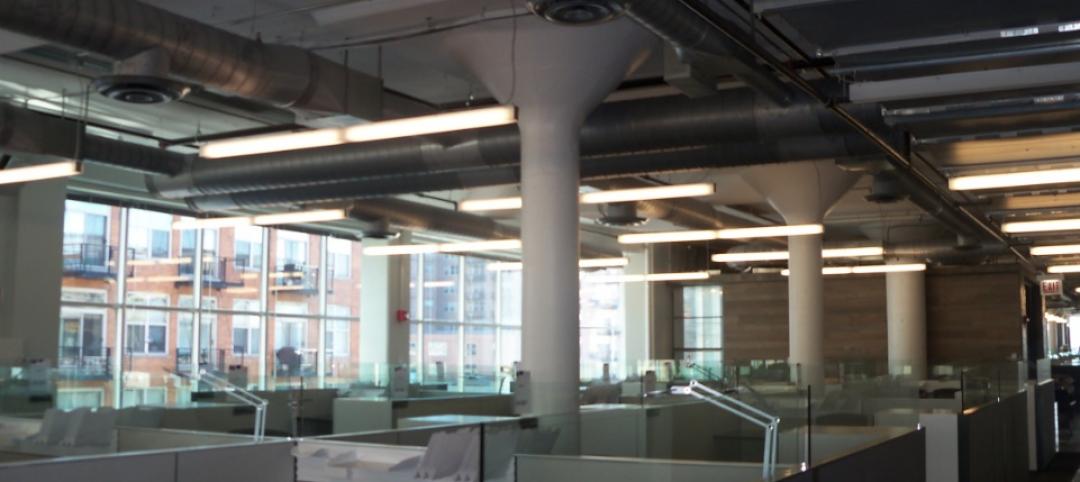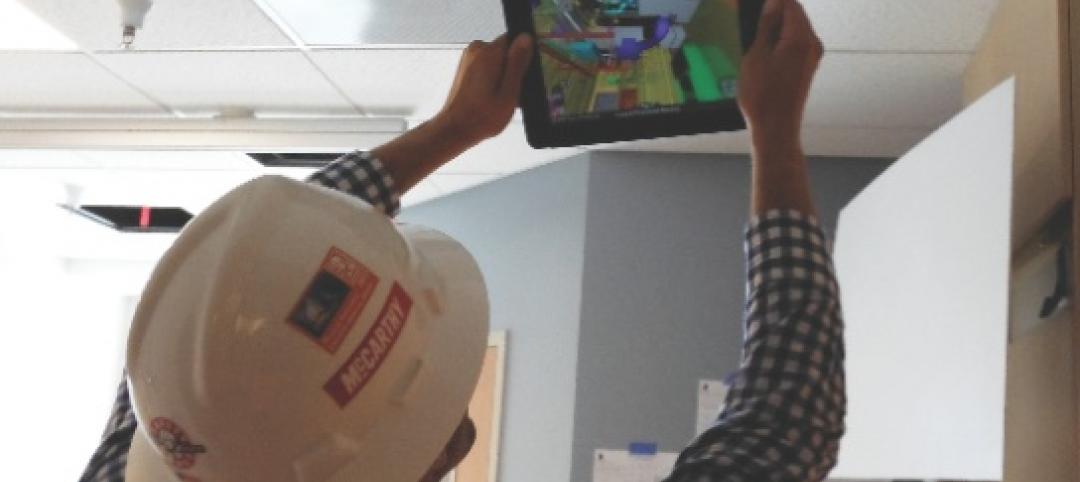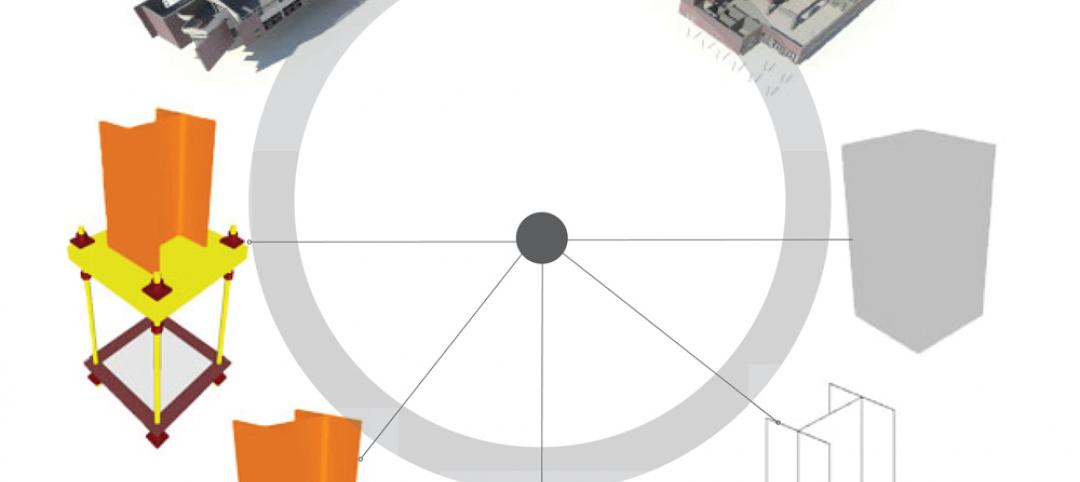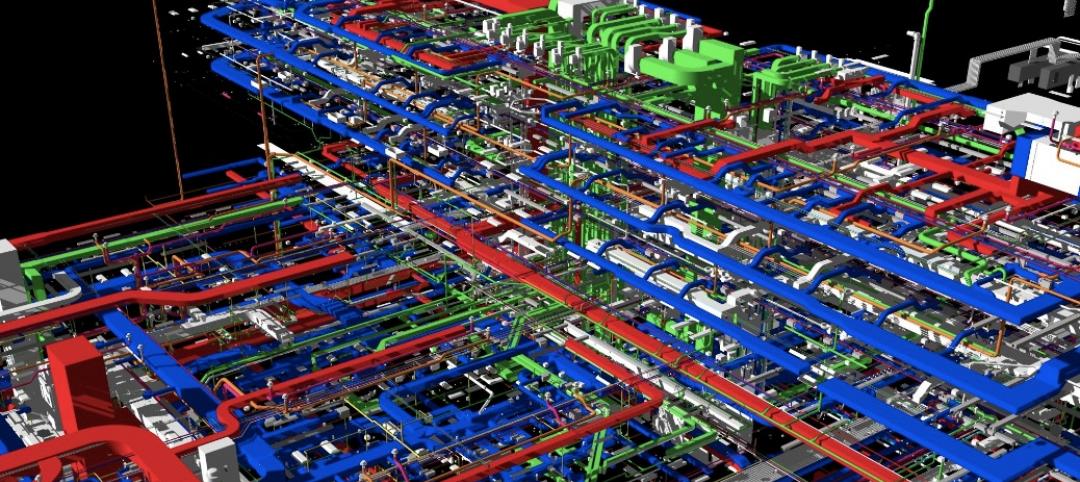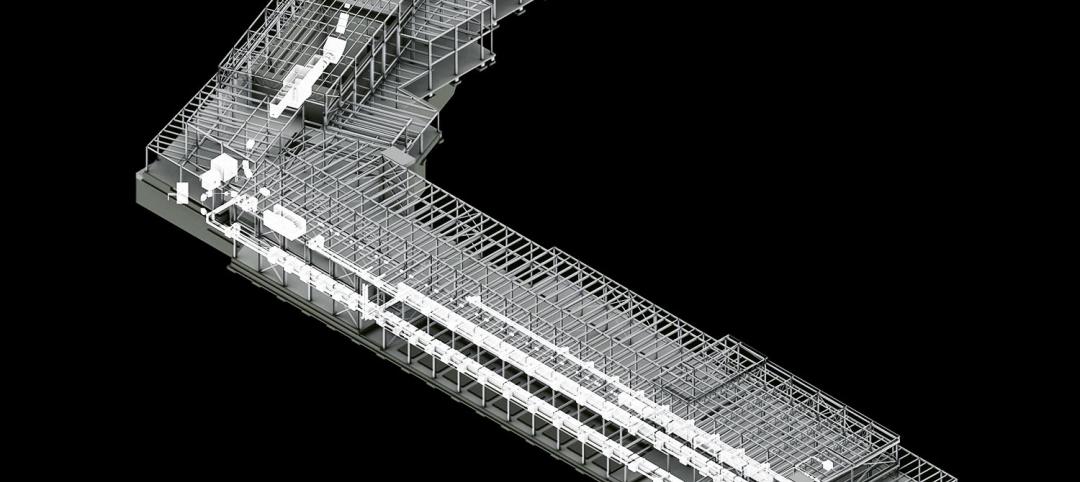By 2020 there will be as many as 50 billion active Internet-connected devices worldwide. Every device throws off “digital exhaust” that provides clues about the user’s preferences and whereabouts, to say nothing of the massive amounts of information mobile devices transmit via social media.
“These are the kinds of data we should be measuring when planning cities,” said David Fano, Partner and Managing Director at Case, the New York–based building information modeling consultancy, during the firm’s first-ever bldgs = data conference, held May 28 at The Standard, along New York City’s High Line. (Editor's Note: Case was acquired by WeWork in August.)
In his opening remarks, Fano advocated for advancing ways to aggregate personal behavior data from inside buildings to extend the definition and application of BIM.
Conference speakers provided examples of how their companies use deep data to comprehend the urban landscape, gain insights into projects and employees, and facilitate growth.
Blake Shaw, Head of Data Services at Foursquare, the personalized local search tool, described how digital trails serve as “microscopes” to observe a city as if it were an organism. He showed heat maps generated by data collected from users’ mobile devices in several cities (including New York and Istanbul) as those users entered different venues. Tracked over time, these maps pick up on a city’s rhythm and pulse.
Foursquare is developing data-driven products that will be able to text recommendations to users when they enter a city or a specific environment, such as a restaurant or retail store. The goal, said Shaw, is “to predict where people will go next”—information that could be invaluable to merchants’ marketing efforts. “Finally, we have a way of measuring this,” he said.
Coordinating project activity
A roundtable discussion with AEC professionals focused on how Building Teams are using data to manage projects and people.
“Data are tools to inform experience,” said Brian Cheng, Designer and Associate with HDR Architects. Cheng profiled a hospital tower at the University of Pennsylvania in Philadelphia, for which HDR used activity data to develop dashboards and inform its design.
Jennifer Downey, National BIM Manager with Turner Construction, noted that on many projects there is often “little correlation between cost and contingency.” Introducing a data-informed model into the equation can “help achieve consensus,” she said.
Case in point: the Wilshire Grand Hotel, currently under construction in downtown Los Angeles, where Turner executed the largest continuous slab pour ever attempted. BIM modeling was imperative to coordinate the caravan of cement trucks needed for the 21,600-cubic-yard pour, which took 20 hours to complete.
Downey pointed to another project, a hospital in Washington, D.C., whose Building Team saved six to eight weeks of rough-in time by agreeing to go with prefabrication for 157 patient rooms.
Peter Raymond, CEO of New York–based tech consultant Human Condition, detailed his firm’s work with Microsoft and Autodesk to refine sensor technology that is embedded into work clothes, such as safety vests. The sensors would track a worker’s activities and transmit information to a supervisor’s mobile device.
Raymond suggested the data could be extremely useful for safety and training, and for addressing behavioral issues. He referred to this product, which is still being tested, as “a social experiment.”
Monitoring subs’ performance
Rogers-O’Brien Construction, a Texas-based contractor, uses data to get a better handle on the performance of its subcontractors. “We wanted to capture what was happening in the field,” said Todd Wynne, the company’s Construction Technology Manager.
For the past two years the firm has been using project management software from FieldLens in its work on Forest Park Medical Center, a 154,000-sf acute-care hospital in San Antonio with 54 beds and 12 operating rooms. Next door is an 84,000-sf, four-story medical office building. The schedule for the combined project, from development to opening, was set at 13 months, which Wynne conceded “was unmanageable for the trades and supervisor.”
Wynne said there were around 7,000 “issues” on the project. One of the hospital’s 16 VIP patient suites had to be retiled three times. There were 1,311 paint problems, mostly related to the quality of the finishes. Each cost the contractor $25 in lost time or extra work.
Data on workers’ performance informed the GC of which subs were helping or hurting the project. That data inevitably influenced its hiring decisions down the road. Having the historical data will enable the firm to predict potential pressure points on future projects.
Over the past decade, home furnishings retailer Crate & Barrel has used BIM on 45 projects. Each new store is unique—the company doesn’t use a prototype, said Director of Construction John Moebes—and requires a complex array of materials that includes 14 miles of wood board and more than a mile of track lighting.
During the past recession, Crate & Barrel mandated a 30–50% reduction in construction costs and a 40–50% reduction in construction time. To comply with those targets, Moebes’ team decided to use tilt-up walls to lower concrete costs. The retailer relies on BIM to simplify the installation of its stores’ spider-web electrical network.
Moebes said that Crate & Barrel has “more confidence” in contractors that track their subs’ performance and hire accordingly. Other panelists said that AEC firms must shoulder some blame for the performance of subs who are rarely included in early design or construction discussions with clients.
“I see a lot of knowledge on the job site that does not get used in the early design of a project,” said Raymond. FieldLens’s CEO, Doug Chambers, agreed, and viewed subs’ input as another data point. “The industry has to recognize that the knowledge in the field has to be unleashed, and disseminated into the technology.”
That’s not going to happen, says Chambers, until the industry gets over its phobia about sharing information.
BIM in workspace renovation
Data is starting to drive the growth of WeWork, a five-year-old redeveloper of affordable urban workspaces, with locations in 11 U.S. cities and more than 30,000 customers. The New York–based company plans to open 40 to 50 locations by next June, and expects to add 50 million sf of space in the next five years.
WeWork looks at 10–15 buildings a week. “We needed a way to see if the building is right for us,” said EVP of Development and Special Projects Roni Bahar. With Case’s help, the company developed standards and templates for space, design, and construction. It has also assembled a component library.
WeWork uses Revit on all of its projects. The company can frame out a 35,000-sf space in two weeks.
“Quality is our next target,” said Bahar, as his company expands into ground-up construction and live/work options. Bahar said that WeWork is also ready to take the logical next step: collecting data on the activities of its customers and users to guide its design, growth, and corporate strategies.
Related Stories
| Oct 18, 2013
A picture’s worth a thousand words… if you can find it
Photographs are becoming more essential to project communication and documentation. Recently, I sat in a local airport integration project meeting in which the owner outlined their expectation for construction documentation. One of the first requirements was to provide photographs throughout the building process.
Sponsored | | Oct 7, 2013
Bridging the digital divide between the BIM haves and have nots
There's no doubt that BIM is the future of design. But for many firms, finding a bridge to access rich model data and share it with those typically left on the sidelines can be the difference between winning a bid or not.
| Oct 2, 2013
Corporate HQ in 10 months made possible with BIM coordination
An integrated Building Team uses BIM/VDC to convert a 1940s-era industrial building into a flashy new headquarters for Hillshire Brands in a matter of months.
| Sep 26, 2013
Mobilizing your job site to achieve a paperless project: fact or fiction?
True mobility in the field has rapidly evolved from lock-box kiosks on each floor to laptops on rolling carts to tablets and iPads loaded with drawings sets stored in the cloud. And WiFi-ready job sites have gone from “nice to have” to “must have” status in just a little over a year.
| Sep 4, 2013
Augmented reality: 12 applications for design and construction professionals
Building Design+Construction reached out to AEC professionals who have studied and applied augmented reality and asked them to pinpoint applications that are ripe for the technology. Here’s what they had to offer.
| Sep 4, 2013
Augmented reality goes mainstream: 12 applications for design and construction firms
Thanks to inexpensive mobile devices and increasingly advanced software apps, Building Teams are finally able to bring their BIM models to life on the job site.
| Sep 4, 2013
Smart building technology: Talking results at the BUILDINGChicago/ Greening the Heartland show
Recent advancements in technology are allowing owners to connect with facilities as never before, leveraging existing automation systems to achieve cost-effective energy improvements. This BUILDINGChicago presentation will feature Procter & Gamble’s smart building management program.
| Aug 8, 2013
Level of Development: Will a new standard bring clarity to BIM model detail?
The newly released LOD Specification document allows Building Teams to understand exactly what’s in the BIM model they’re being handed.
| Jul 19, 2013
Top BIM Construction Firms [2013 Giants 300 Report]
Turner, Clark Group, DPR top Building Design+Construction's 2013 ranking of the contractors and construction management firms with the most revenue from BIM-driven projects.
| Jul 19, 2013
Top BIM Engineering Firms [2013 Giants 300 Report]
Jacobs, URS, SAIC top Building Design+Construction's 2013 ranking of the engineering and engineering/architecture firms with the most revenue from BIM-driven projects.



